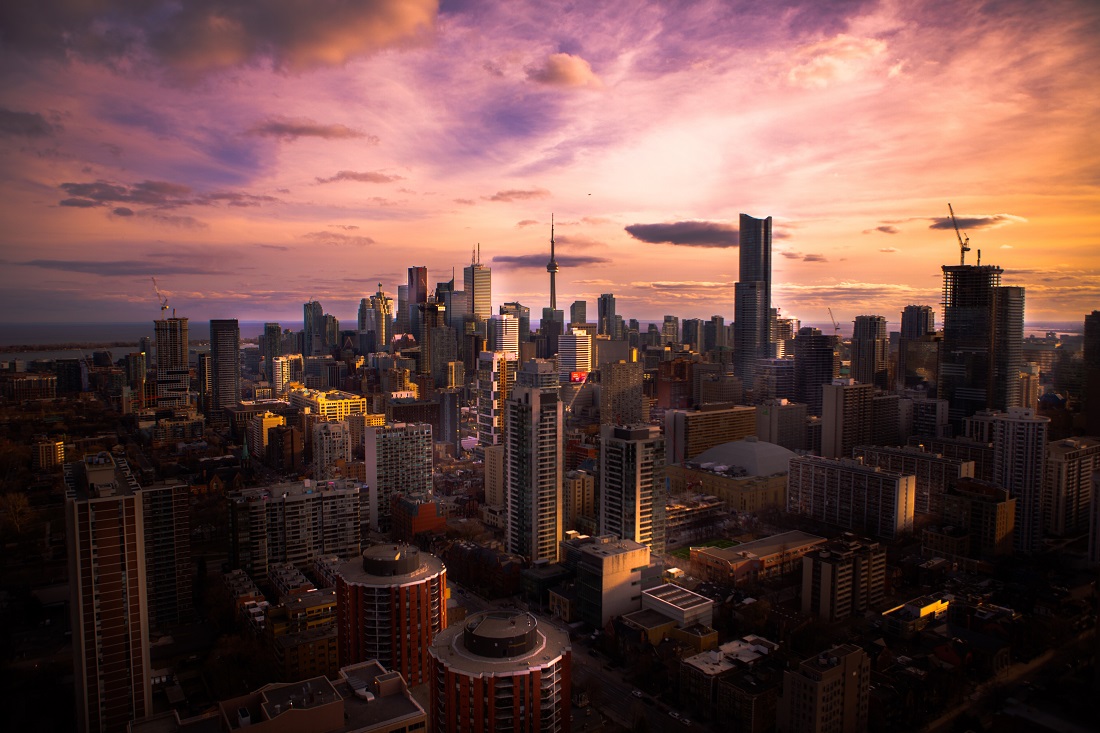Immigration Vital to Canadian Economic Growth, According to New Study
Even if All Canadians Were Working, Immigration Would Still Be Necessary to Meet Labour Needs
A recent study by the Conference Board of Canada (CBoC) shows that, even if all of Canada’s new graduates and underrepresented groups in the workforce (including women, the disabled, and Indigenous people) were fully employed, the country would still need immigrants to help satisfy all labour needs and demands.
The study, titled Can’t Go It Alone: Immigration is Key to Canada’s Growth Strategy, focuses on four key findings:
- Because Canada has an ageing population and low fertility rate, the country will require new talent sources to enter the labour force to maintain the standards of living most Canadians now expect.
- Between 2018 and 2040, some 11.8 million Canadians will leave schools and enter the workforce as 13.8 million workers exit the workforce, creating a serious labour shortage.
- By improving workforce participation rates, nearly 2.2 million workers could be added to the labour force by 2040. This would mean greater participation from women, Indigenous people, and persons with disabilities. This increased participation would also add nearly $101 billion to Canada’s economy.
- Immigration will “remain a formative solution, accounting for all of Canada’s net labour force growth—3.7 million workers—and one-third of the economic growth rate between 2018 and 2040.”
These findings show just how important immigration is for Canada’s continued economic growth. The pending retirement of the baby boomer cohort of workers (the most prominent in Canada) is creating economic and fiscal pressure within the country. It’s expected that, by 2030, all 9.2 million boomers will have retired or be of retirement age.
Basically, the workforce is in danger of shrinking without continued efforts to bring in newcomers.
Sizable workforces are necessary to stimulate economic activity. Population growth also increases tax revenues, helping pay for rising healthcare costs associated with an ageing population, but also supporting the standards of living expected by Canadians.
The current Liberal government’s approach to immigration is to continually increase immigrant intake gradually over the coming years, rising to 350,000 immigrants annually by 2021 and increasing steadily in the years to come.
The study suggests that “if Canada gradually raises its immigration rate to 1 per cent of its population by 2030—up from about 0.8 per cent today—newcomers would contribute some 5.3 million workers to the labour force and one-third of the economic growth rate between 2018 and 2040.”
The CBoC study also touches on increasing technological advancements leading to the elimination of some jobs but suggests that these fears are overblown, citing a Brookfield Institute study that shows that 42 per cent of all Canadian jobs have the potential for some level of technological automation. However, only 12.7 per cent of university-educated workers would be vulnerable to replacement in this case.
Canadian immigration is a significant economic driver; this is not news, but it is always good to hear it stressed so emphatically and supported by data.
Canada An Immigration Leader, Paradoxically
Most Canadians Welcoming to Immigrants But Concerned with Irregular Arrivals
There are, currently, over 50 million refugees in search of a home on the planet. While there are some in Canada who would suggest our country has done its fair share for these people, the fact remains our nation is a world leader with a notable track record for helping and welcoming people in search of a new home.
In a recent opinion piece in the Ottawa Citizen, David Kilgour discussed some of Canada’s highs and lows, and one of the central paradoxes at the heart of the current debate over immigration and refugees in Canada.
Canada welcomed Irish immigrants fleeing the potato famine in the 19th century, writes Kilgour, and continued this tradition in the 1950s with Hungarians fleeing Soviet oppression and Vietnamese and Ugandans arriving in the 1970s.
Kilgour also notes two particular black spots on this record, though: the Komagata Maru incident and the turning away of Jewish refugees fleeing the Holocaust in 1939.
Suffice to say, public opinion hasn’t always been completely positive when it comes to refugees, but the vast majority of Canadians are welcoming of the diversity they bring.
But while Canadian public opinion surveys suggest citizens have no real issue with immigrants and refugees, they’re concerned with how they arrive in the country. This is the paradox Kilgour discusses: that we’re very generous with wanting and allowing people to come in, but tight-fisted with how. Over the past two years, nearly 40,000 persons entered Canada at irregular borders after getting a US tourist visa.
In response, the federal government will now be implementing stricter refugee claim policies. If someone has made a claim at a partner country’s borders and been denied, they will not be eligible to make another refugee claim seeking Canada’s protection.
The concern with irregular arrivals stems from a misunderstanding of the very nature and concept of a refugee. Refugees cross borders to seek safety and have been doing so for many years. The recent influx of refugees through the US border coincided with the election of President Trump in the United States and anti-immigration policies in that country. Individuals seeking protection in Canada should be able to do so even if they have already made a claim in the United States because in many legitimate respects they may not feel safe to make their claim in that country.
The Government’s response and implementation of stricter policies is not justified and was in large part a political decision because of the upcoming Federal elections. Canada’s immigration and refugee policies should not be politically motivated, and Canadians need to better appreciate the reasons behind the rise in refugees coming through the Canada/US border.
We are indeed a welcoming nation and have a reputation for accepting refugees and offering protection. That reputation can be undermined by short-sighted legislative amendments with long-term and severe consequences.
Canadian Public Opinion on Immigration and Refugees Holding Steady
New Survey Data Suggests Canadians Remain Positive About Immigration and Refugees
According to the results of a recent survey conducted by the Environics Institute, most Canadians don’t see immigration and refugees as a pressing national issue.
The survey was previously conducted six months ago, in October of 2018, where 5% of Canadians answered “immigration and refugees” when asked what the most pressing problem facing Canada was.
As of April 2019, that number has dropped to 3% of Canadians. All responses were unprompted, with no options given and only a single answer accepted.
Meanwhile, the economy remains a significant issue on the minds of Canadians, with 22% of respondents saying they feel it is a serious issue in the country, up from 19% last October.
According to the survey, nearly 60% of respondents disagree with the statement, “Overall, there is too much immigration in Canada.” Nearly 80% agree that immigration brings positive economic impacts.
The survey delves into responses along partisan lines, as well as geographic location. BC and Atlantic Canada remain big supporters of immigration, and those who support the Federal Conservative Party or People’s Party of Canada are most likely to feel immigration levels are too high—though even then, there’s an admission that levels are lower than what they were.
However, the question of immigrants adopting Canadian values remains split almost evenly, 51% of Canadians agreeing and 42% disagreeing. Integration clearly remains an issue for many in the country, and could be a contributing factor to anti-immigrant and anti-refugee sentiments.
Canada’s attitudes have, historically, been remarkably welcoming, despite events such as the Komagata Maru Incident and the country turning away Jewish refugees on the MS St. Louis in 1939. It is heartening to see that the country remains committed to this attitude, but there are clear signs that more can be done to create a welcoming and inclusive environment for newcomers.
This survey also flies in the face of very public anti-immigration attitudes from major politicians. Ontario Premier Doug Ford has been vocal in describing the asylum seeker situation in Ontario (and indeed Canada) as a “crisis,” despite refugee claims remaining in line with previous years and irregular border crossings dropping to their lowest numbers since 2017.
The numbers simply don’t lie. Canadians have no real issues with immigration and refugees. Unfortunately, it’s all too easy for these groups to be scapegoated. Responsible and informed politics should be promoted and practiced by all politicians, mainly to avoid unintentionally reinforcing stereotypes and biases, resulting in the emergence of extremist groups and the targeting of vulnerable populations.
Supreme Court Rules for Habeas Corpus
Immigration Detainees Granted Right to Challenge Detention
A recent judgement released by Canada’s Supreme Court means significant strides for detained migrants. The ruling offers more appeal options for those who face extended detention times for breaching immigration law.
Under habeas corpus – a recourse in law allowing an individual to report unlawful detention – detained migrants are now given the opportunity to challenge the legality of their incarceration and determine the lawfulness of immigration detention regarding their case.
While most detainees (who are typically in maximum security prisons) do have access to a federal detention review system that analyzes the requirement of incarceration case-by-case, according to the court, the system is less beneficial as it does a poor good job in addressing concerns regarding the conditions and duration of the detention.
Furthermore, in a 6-1 decision in favour of immigration detainees’ rights to provincial courts, the Supreme Court of Canada concluded that applications must be heard regardless of what alternative remedies may or may not be available to the detainee. They stated that a superior court does not have the authority to decline jurisdiction to review these applications.
The judgement clarifies that immigrant detainees must be privy to habeas corpus and must be able to raise their concerns before the provincial court.
Efrat Arbel – expert in refugee, prison, and constitutional law and a University of British Columbia law professor labelled this judgement as “extraordinary” and praised the Supreme Court for their recognition of immigration detainees’ rights.
Arbel goes on to state that “in certain terms, the court is saying these detainees can benefit from habeas and there is a way out for them. The availability of the remedy puts immigration detainees on equal footing as other individuals. This is a significant step forward for the rights of the detainees to be respected and upheld.”
The Catalyst
Pakistani immigration detainee Tusif Ur Rehman Chhina arrived in Canada in 2006 seeking asylum. Six years later he would be stripped of his refugee status due to his involvement in criminal activity and lack of competent representation to build his case.
Thirty months in jail would go by while border officials attempted (and failed) three separate times to gather his travel documents from Pakistan in an effort to deport him.
This shouldn’t happen to refugees or asylum seekers. That’s why the high court has been making strides to ensure a new process is followed to prevent these saturations from occurring in the future.
Four years later, in 2016, Chhina raised his concerns about his lengthy incarceration and declared to the Alberta provincial government that his conditions and duration in detention were unlawful. After a judge reviews his claim, it was rejected due to the judge ruling that the matter did not fall under the provincial court’s jurisdiction.
Chhina’s lawyer, Nico Breed took on the case, appealed to the Alberta court, and won shortly after. By September 2017, Chhina was deported back to Pakistan. But the appeal proceeded to the Supreme Court by the Public Safety Minister and Attorney General of Canada.
Government lawyers explained that immigration detainees must be given the opportunity to make their claims followed by independent reviews that would either grant their release or justify their continued detention sentence.
Any exceptions to habeas corpus will need to be evaluated with care and an exceptional amount of detail to ensure no human rights violations occur.
On behalf of five concurring colleagues, Justice Andromache Karakatsanis states “it is necessary to ask upon what basis the legality of the detention is being challenged, and whether there is a complete, comprehensive and expert scheme that is as broad and advantageous as habeas corpus in relation to the specific grounds in the application. However, [tribunal detention] proceedings do not provide for review as broad and advantageous as habeas corpus with respect to the specific basis upon which [Chhina] has challenged the legality of his detention — that is, the length, uncertain duration and conditions of his detention.”
The one opposing member, Justice Rosalie Abella argued against habeas corpus. “I see no reason to disturb the court’s jurisprudence by opening an alternative route, one that will lead to the forum shopping, inconsistent decision making, and multiplicity of proceedings,” she wrote. She justified her sentiments by explaining that in relation to immigration law, nothing in the language precludes adjudicators from reviewing these cases and evaluating factors that could determine the legality of the detention system.
While some may not see the relevance in this decision, it’s making a positive impact. This judgement is a step in the right direction towards the abolition of the immigration detention system – a massive victory for civil and human rights in Canada.
Big Business Wants Politicians to Avoid Anti-Immigrant Sentiments
Business Council of Canada Urges Political Leaders to Avoid A Single-Topic Election in 2019
Will a single topic dominate this year’s federal election? Not if corporate Canada gets their way.
Goldy Hyder, the head of the Business Council of Canada (a lobby group representing chief executives of Canada’s largest corporations), has spoken openly about the organization’s desire to avoid making this year’s election all about immigration.
Meeting with a reporter in Ottawa late in April, Hyder said he’d promoted the economic case for welcoming more newcomers.
As reported by CTV News, Hyder commented, "What I've said to the leaders of the political parties on this issue is, 'Please, please do all you can to resist making this election about immigration.' That's as bluntly as I can say it to them."
A short two weeks after Hyder’s comments, Canada posted record-setting job growth for the month of April 2019, adding 106,500 total jobs and causing a slight dip in the unemployment rate.
In fact, according to a Financial Post report, “the jobs increases have largely reflected higher labour force numbers as the economy pulls in new workers – youth and immigrants in particular – rather than falling unemployment.”
Canada’s aging population, coupled with the relatively low birthrate, also means that immigration is necessary to offset labour shortages caused by increasing numbers of retirees.
Still, there are also job shortages facing the country, and there’s a commonly-held (yet erroneous) belief that somehow this is the result of increased immigration.
The reality is that healthy employment growth has tightened job markets, which makes it harder for firms to find workers.
“Every job that site empty is a person not paying taxes,” commented Hyder. “We have job shortages across the country, and they’re not just at the high end.”
Hyder also said that members of the Business Council were also aware that immigration has become a hot-button topic. “We’re worried about that in the sense that the public can very easily go to a xenophobic place.”
Case in point: Quebec Premier Francois Legault won this year’s provincial election and promised to cut annual immigration levels in the province by 20 per cent—despite the fact that Quebec is facing significant demographic challenges.
It’s all too easy to imagine how immigrants and refugees will be used as political tools in the coming federal election. As such, it’s incredibly heartening to hear big business politely ask political leaders not to make this topic the be-all, end-all election issue.





